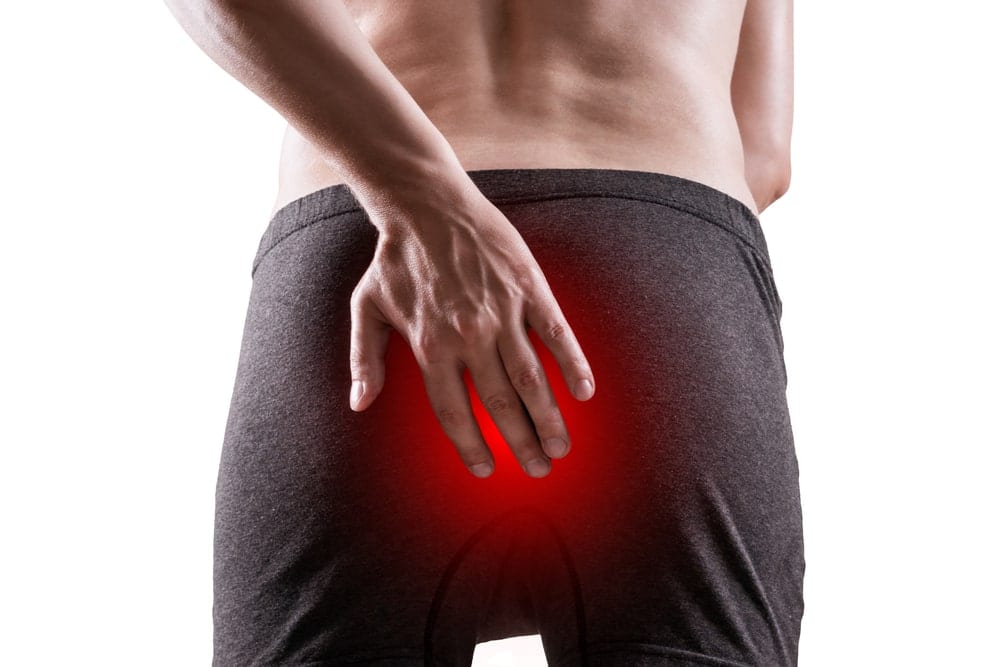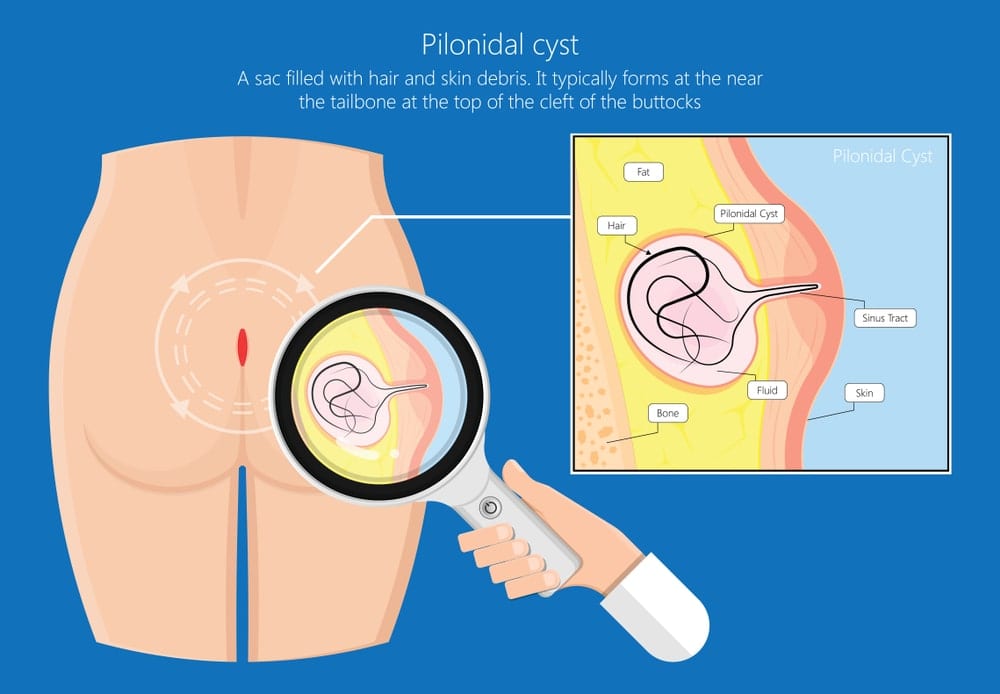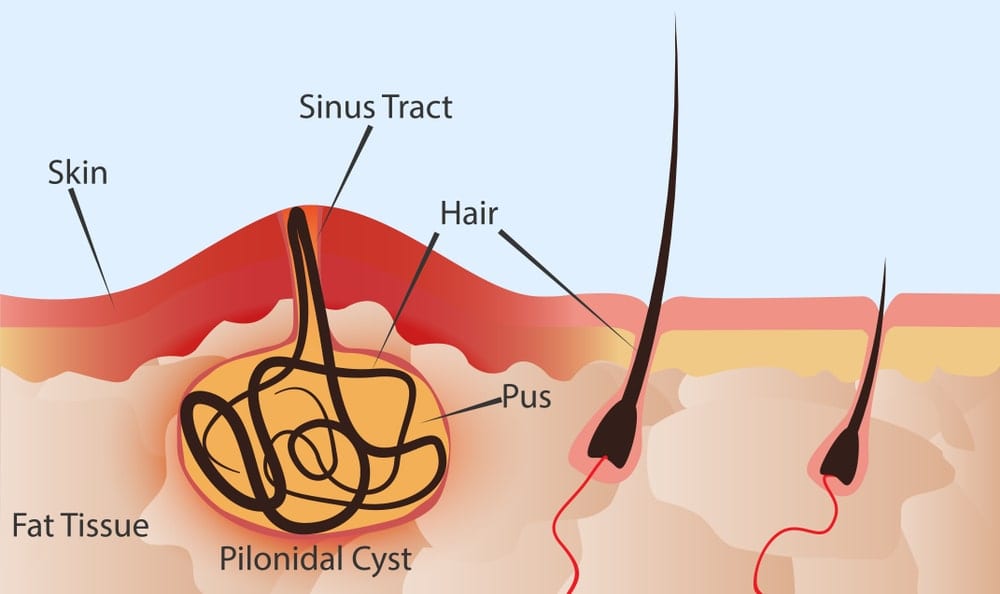Pilonidal Cysts
About Pilonidal Cysts
A pilonidal cyst is an abnormal fluid-filled skin pocket located near the tailbone. It occurs when hair or other debris punctures the skin and becomes embedded. In some instances, the cyst gets infected resulting in an abscess which is often extremely painful. The cyst can be drained through a small incision, or in more severe cases, removed surgically. Leading pilonidal cyst expert Dr. Chanu Dasari can diagnose pilonidal cysts and provide the best minimally invasive treatment options. Dr. Dasari is a skilled surgeon in various treatments of pilonidal cysts, having performed numerous complex surgeries to treat many different cysts.
Signs and Symptoms of Pilonidal Cysts
Your cyst may start out as a small, dimple-like depression on the surface of your skin. When it becomes infected, a pilonidal cyst can turn into a painful, swollen abscess.
You may have a pilonidal cyst if you have been experiencing:
- Swelling of the tailbone area
- Tenderness of the swollen areas
- Acute pain when sitting
- Redness or discoloration
- Pus or blood draining from the abscess
- Low grade fever
- Hair protruding from cyst
When to Visit a Pilonidal Cyst Removal Specialist
A Pilonidal cyst is a benign condition. On some occasions, it can progress to an extremely painful and debilitating abscess. Pilonidal cysts are notorious for recurrence; to prevent this, they must be accurately drained, lanced, or surgically treated. Long-term complications can be easily avoided if you see a Pilonidal specialist right away when you begin to notice the above symptoms
Treatment of Pilonidal Cysts
As soon as an infected pilonidal cyst is diagnosed, it should be treated promptly. Most of the major problems that can occur with pilonidal cysts are preventable at early stages with quick analysis, early diagnosis, and exceptional surgical treatment.
Surgical options include:
Incision and drainage – Instilling the surgical spot with a local anesthetic, Dr. Dasari makes a small diamond-shaped cut in the patient’s lower back to drain out the dirt, hair follicles, and fluid. The open wound is packed with gauze and the healing period takes around 3 weeks. Regular dressing would be needed until the wound is completely healed.
Advantages
- Infected cyst Drained
Disadvantages
- Dressing is painful
- The healing process is slower
- Sometimes does not recover completely
Flap Surgery – Advanced flap surgery may be the most successful treatment method for removing the cyst and transferring healthy tissue to cover the site of the excision. This surgical method reduces the chance of cyst recurrence and has a much higher rate of wound closure. A disadvantage of this treatment is the necessity for larger sutures to remain in place for several weeks. Sutures are typically removed in the clinic setting with minimal discomfort.
Laser Surgery – A diode laser of 1470nm is utilized during this treatment process. The laser treatment comprises the excision of the pilonidal cyst area, and can also treat the superior and inferior extensions. It involves a small 1cm cut instead of a flap or larger incision. Laser surgery works best on medium-sized cysts only. Larger cysts can still have a risk for recurrence, and a smaller cyst may suffer from skin damage.
Advantages
- Quick surgery
Pilonidal Cyst Specialist Dr. Chanu Dasari
With over a decade of experience as a Las Vegas pilonidal cyst removal specialist, Dr. Dasari can quickly and effectively identify the symptoms of pilonidal cysts. He makes the diagnosis on the basis of specific symptoms. Most of the serious complications of the pilonidal cyst are preventable at early stages with prompt assessment, early diagnosis, and precise treatment.
If you have noticed symptoms of a pilonidal cyst, schedule an appointment with Dr. Dasari at his practice, Minimally Invasive Surgery, today at (702) 602-6600










